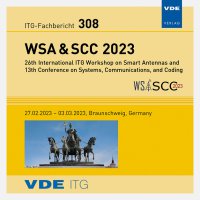An Improved Data Collection Framework for Enabling ML-based QoS Prediction for Vehicular Communication
Conference: WSA & SCC 2023 - 26th International ITG Workshop on Smart Antennas and 13th Conference on Systems, Communications, and Coding
02/27/2023 at Braunschweig, Germany
Proceedings: ITG-Fb. 308: WSA & SCC 2023
Pages: 6Language: englishTyp: PDF
Authors:
Krause, Anton; Schulz, Philipp; Fettweis, Gerhard (Vodafone Chair Mobile Communications Systems, Technische Universität Dresden, Germany)
Palaios, Alexandros (Ericsson Research, Germany)
Kumar, Atul (Department of Electronics Engineering, Indian Institute of Technology (BHU) Varanasi, India)
Abstract:
The use of machine learning (ML) is often proposed for improving different performance metrics of wireless communication systems. Prominent examples under discussion for the evolution of cellular networks towards 6G include predictive quality of service and predictive radio resource management. For this, ML requires a vast amount of data to learn the underlying principles, which often can be considered a roadblock to the adoption of ML in commercial networks. This motivates to study how the data collection procedure can be improved. Even though radio environment correlations have been described extensively in the literature, their link to improving the adoption of ML algorithms is rarely studied. If the sampling frequency of physical layer metrics can be lowered due to the correlation structure of the radio environment – without impairing the suitability of the data for implementing different ML applications – less complex devices can be used, and processing can be designed more power-saving, which is particularly important for mobile devices. First, as an example, the correlation of reference signal received power values depending on the distance traveled by the vehicle is analyzed based on data from a measurement campaign. It reveals that the correlation of different radio environments can be used to optimize the data collection procedures. The main contribution of this work is to demonstrate that with our approach, the sampling frequency for collecting measurements can be strongly reduced if a small increase in the prediction error is tolerable.


